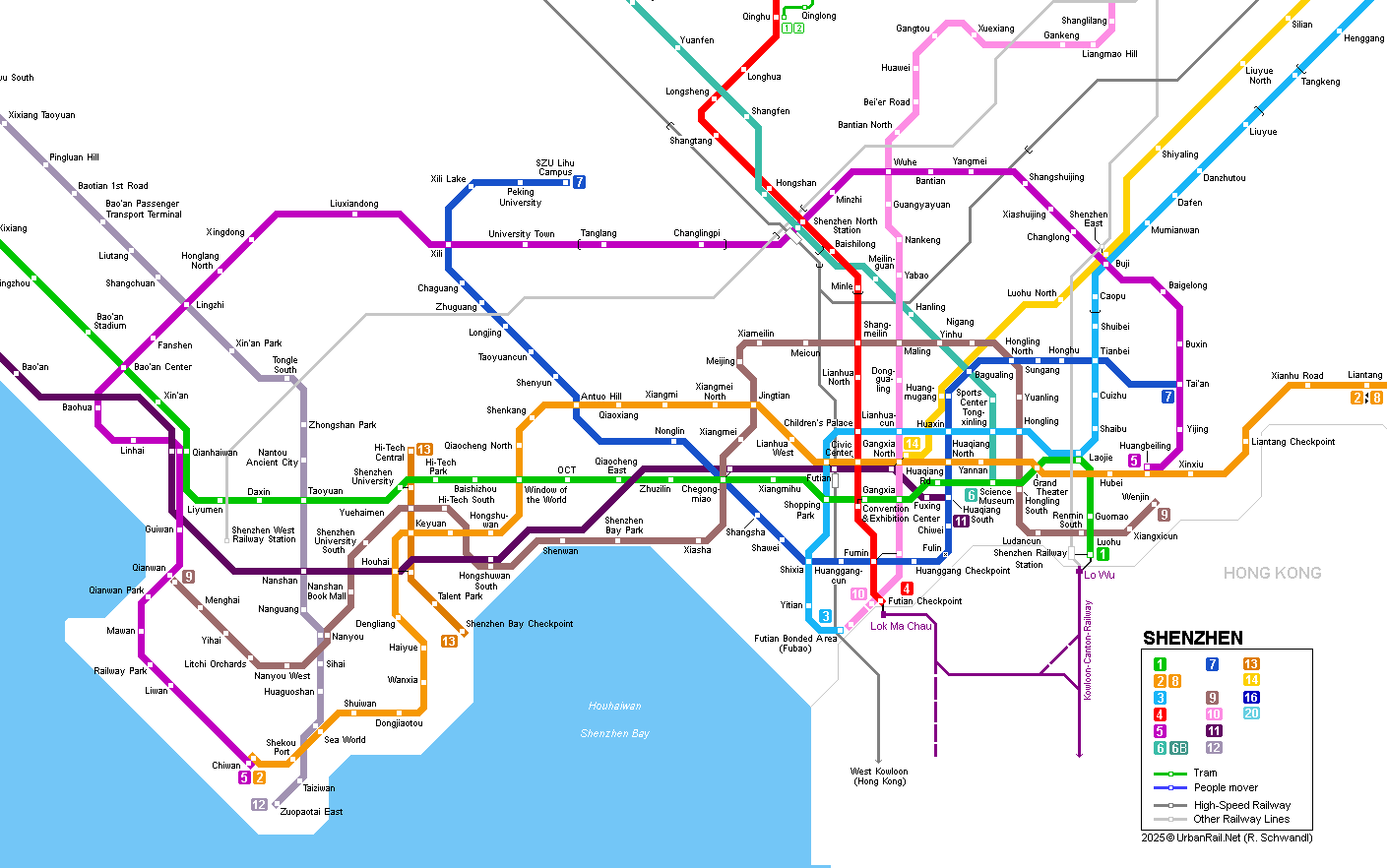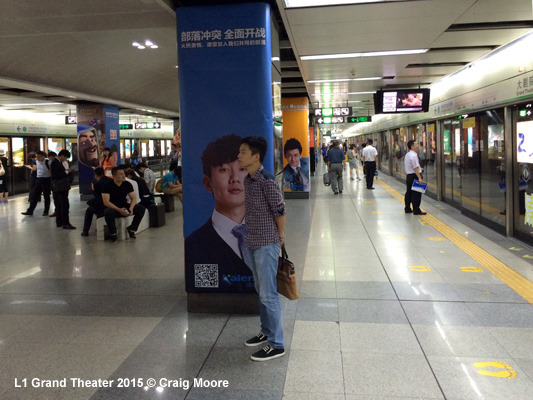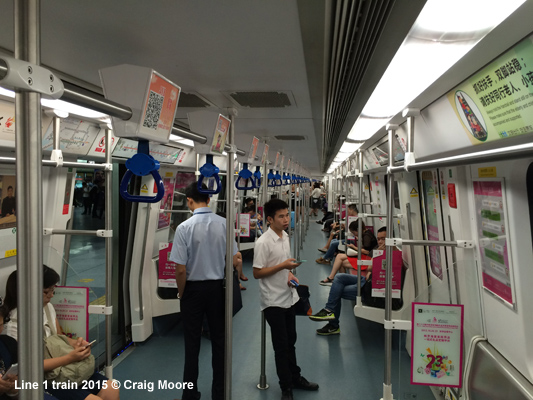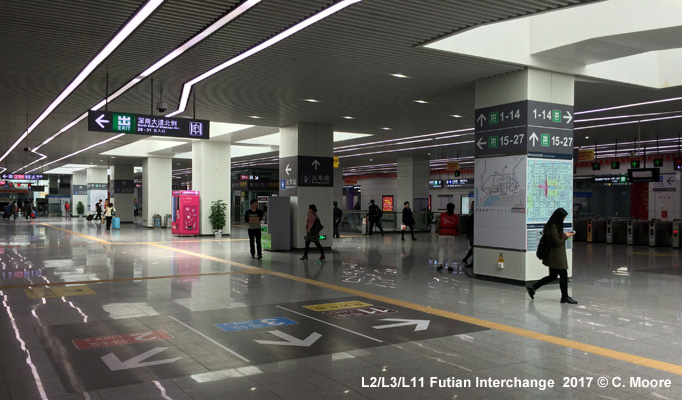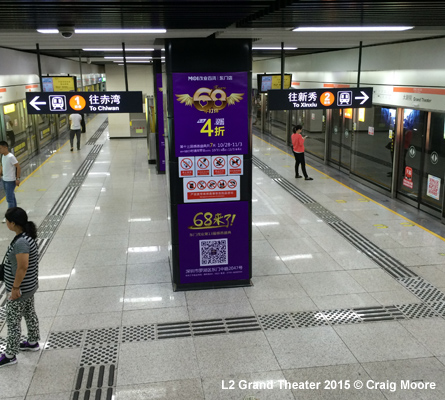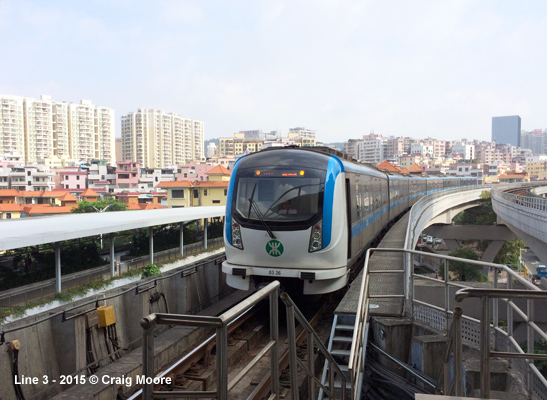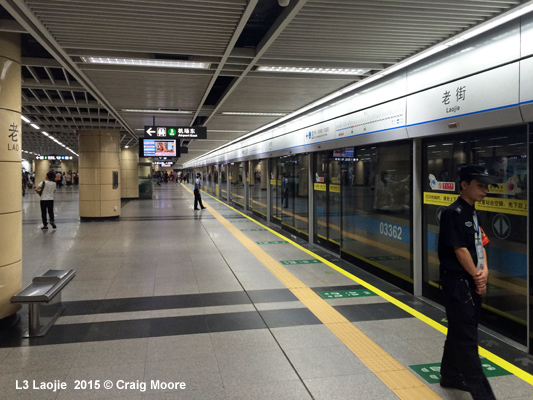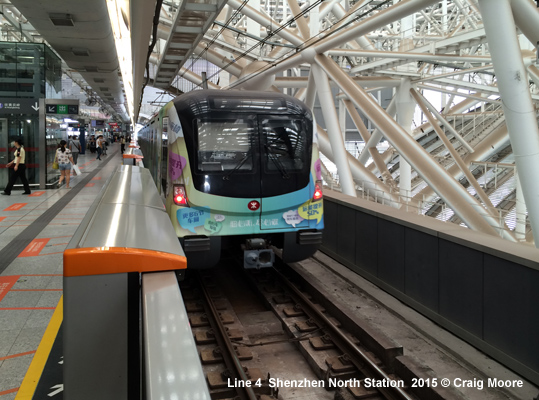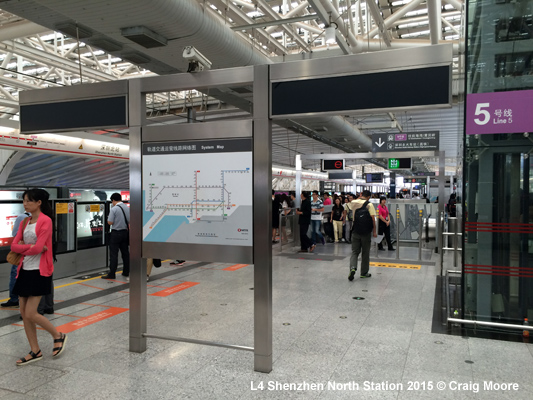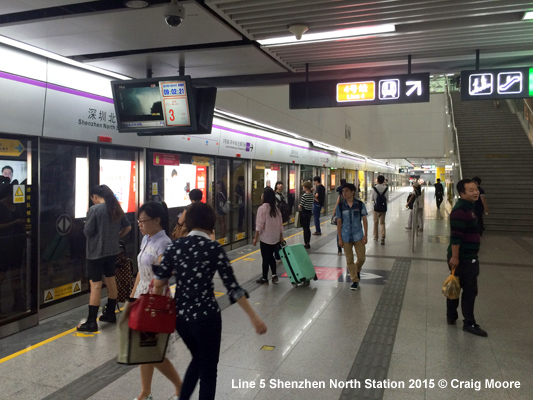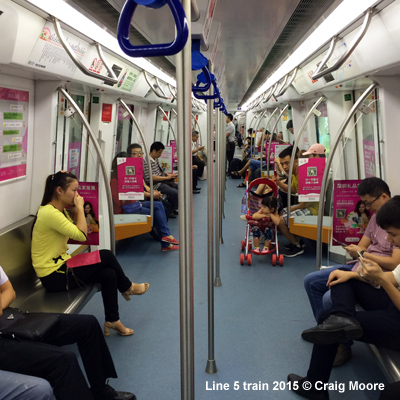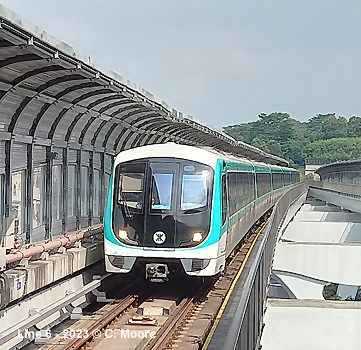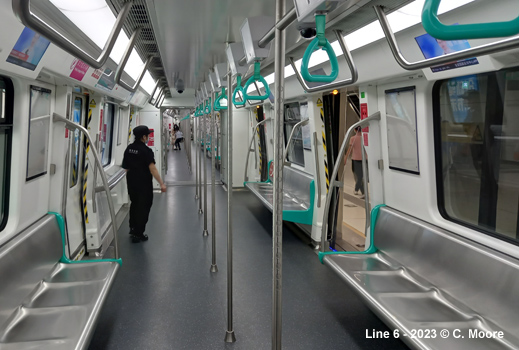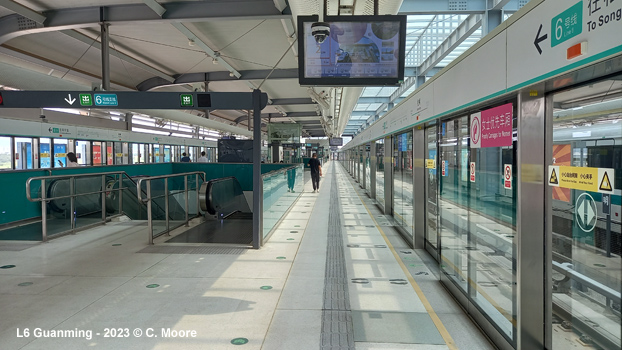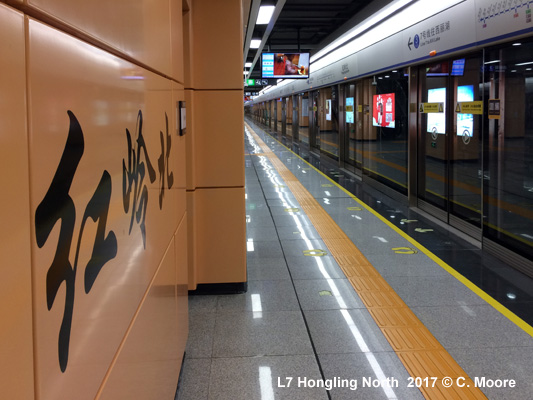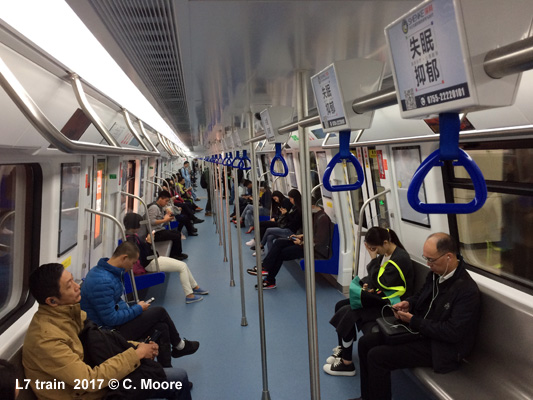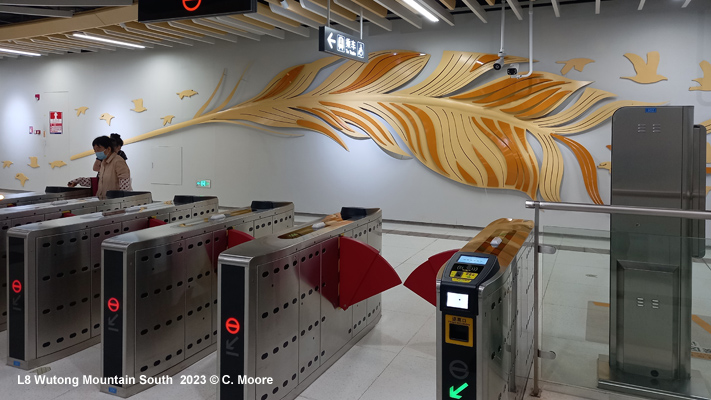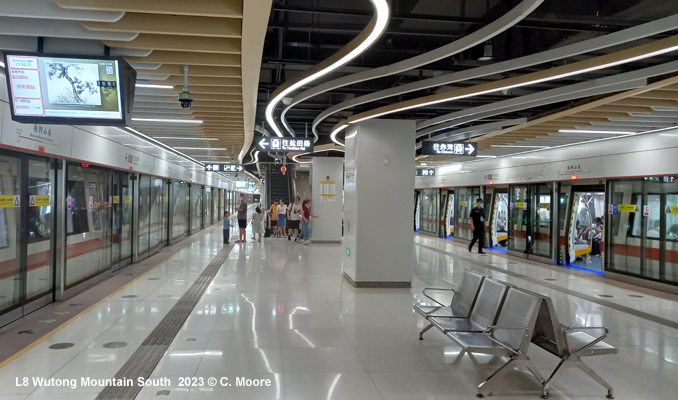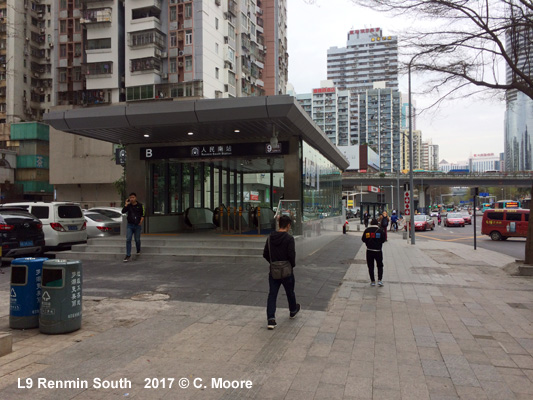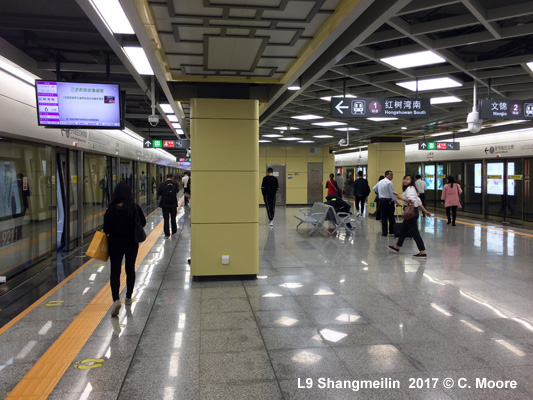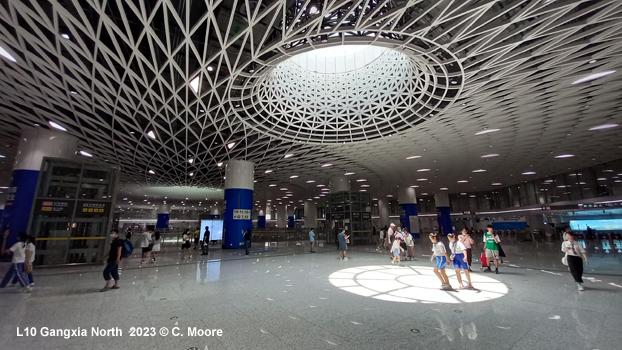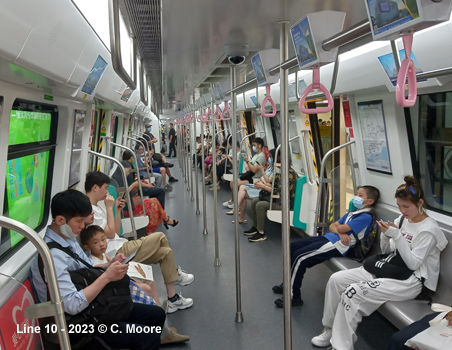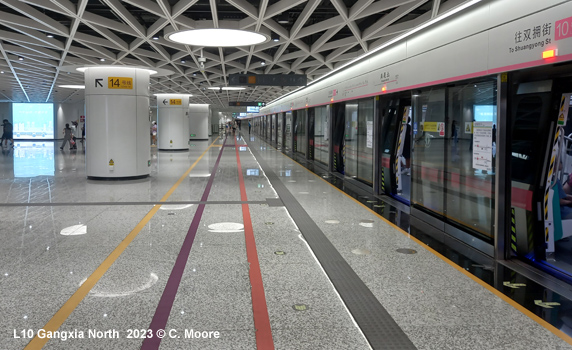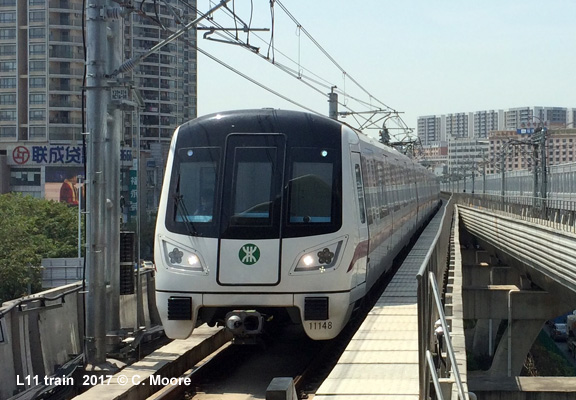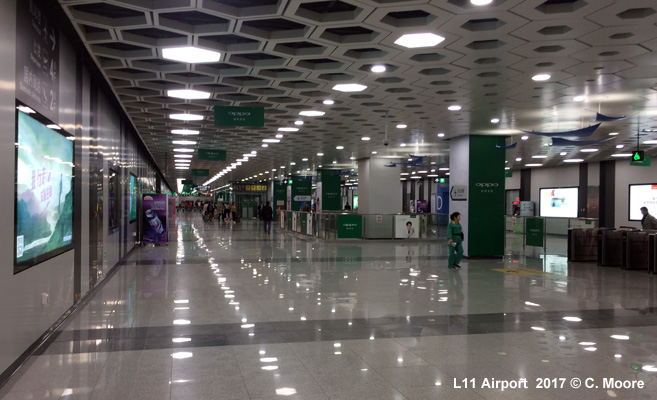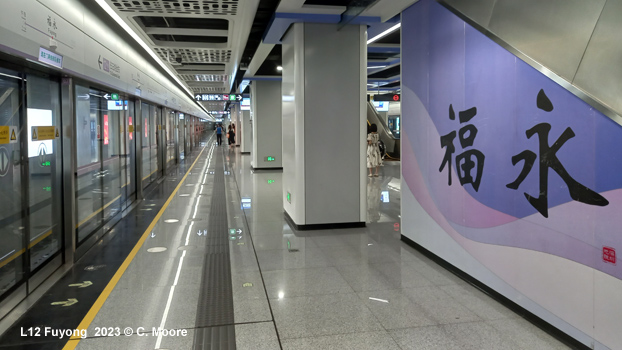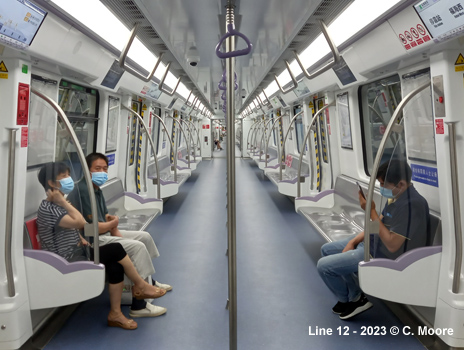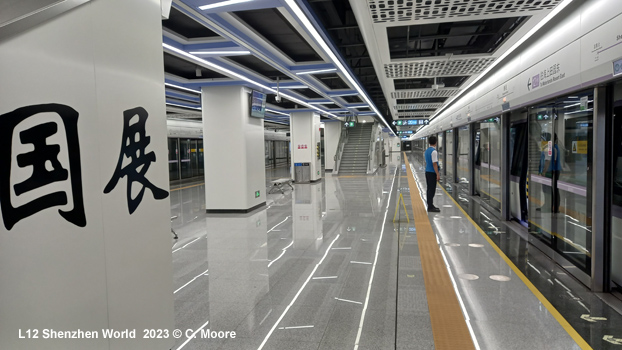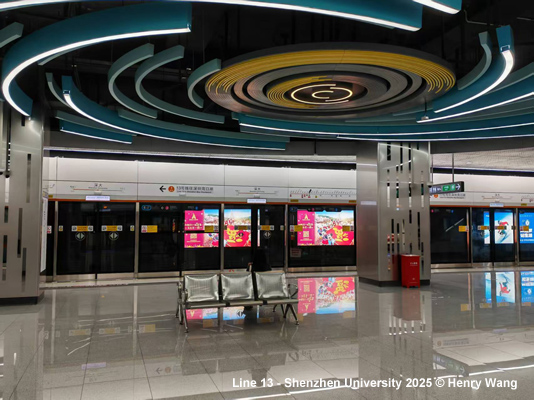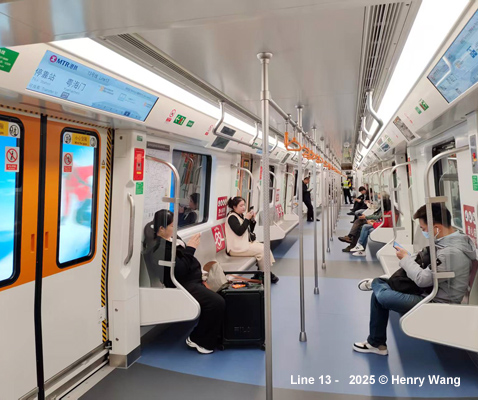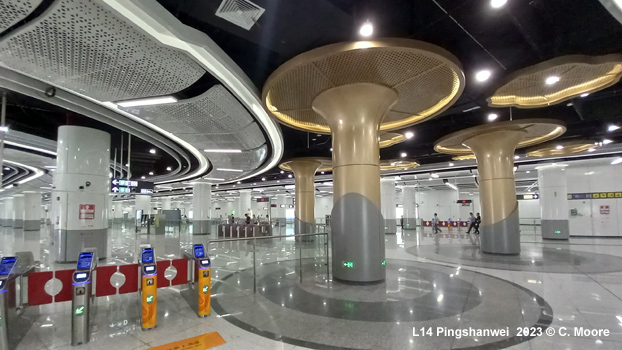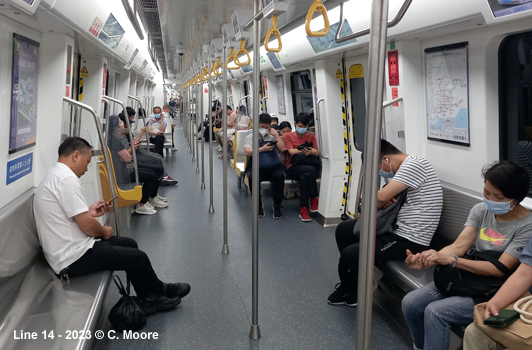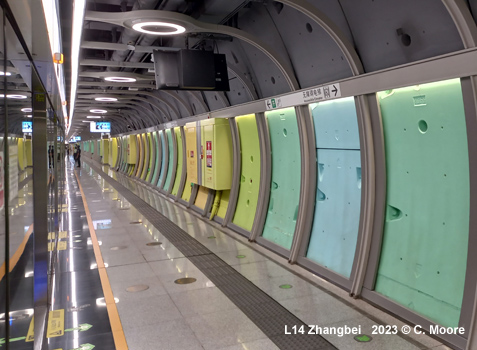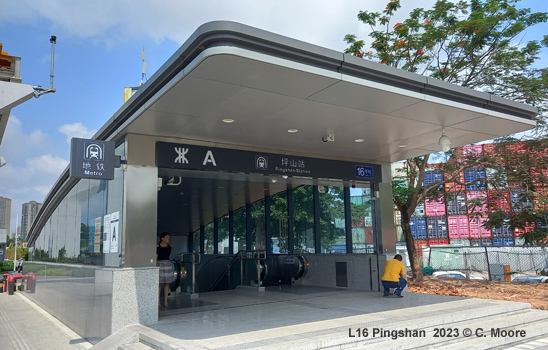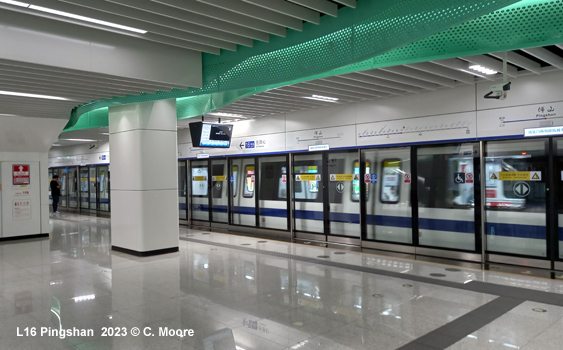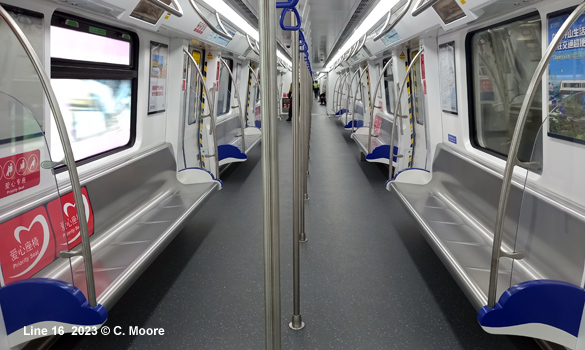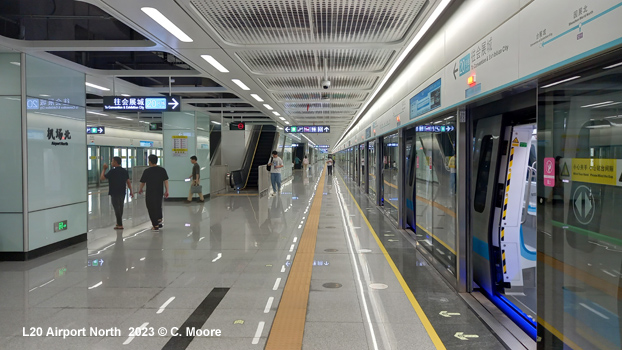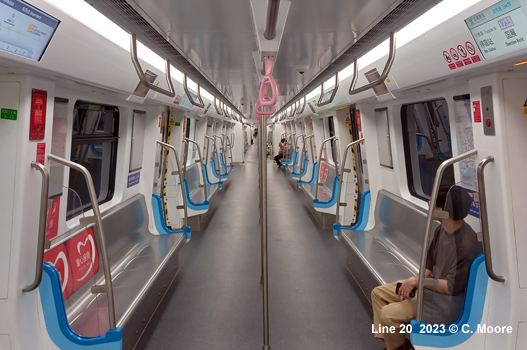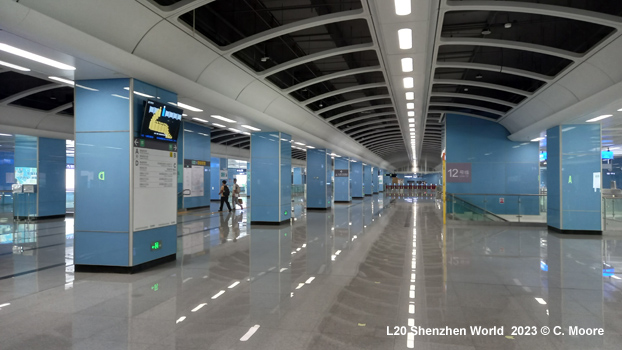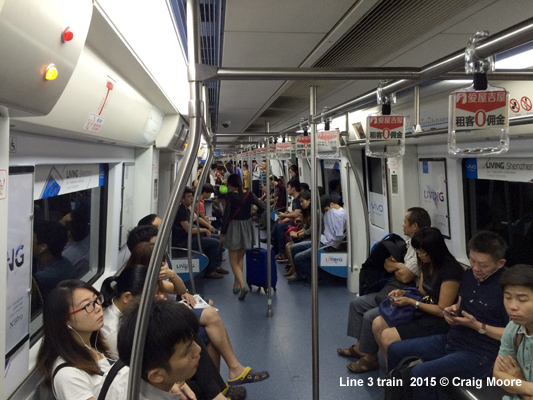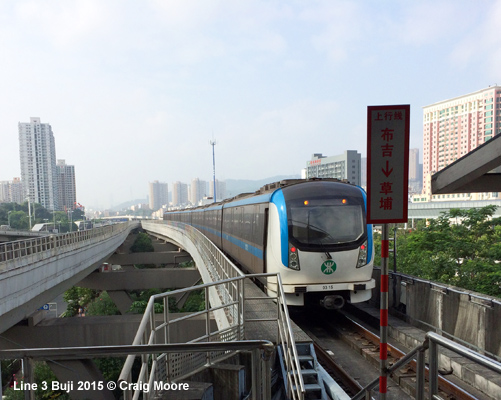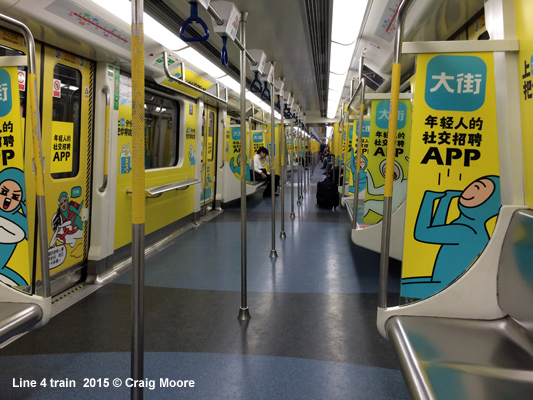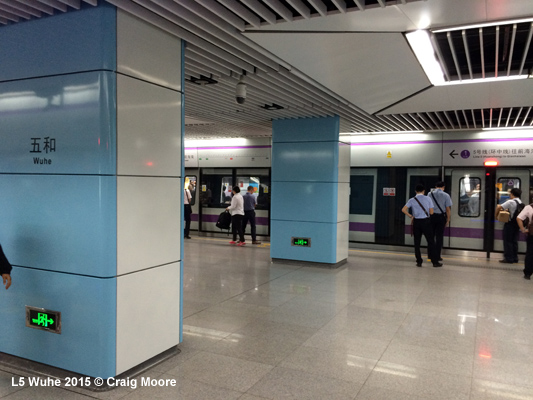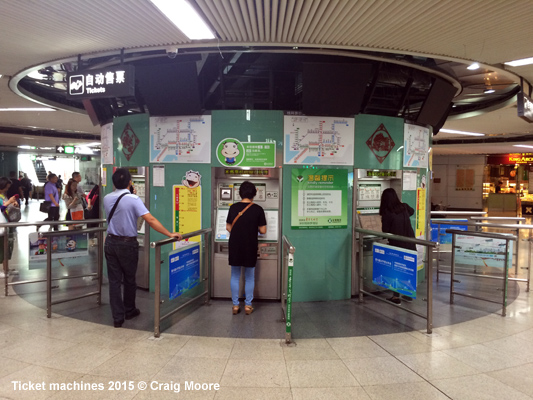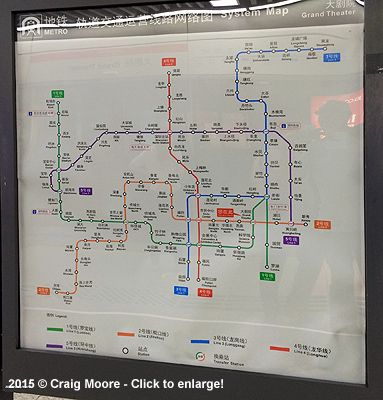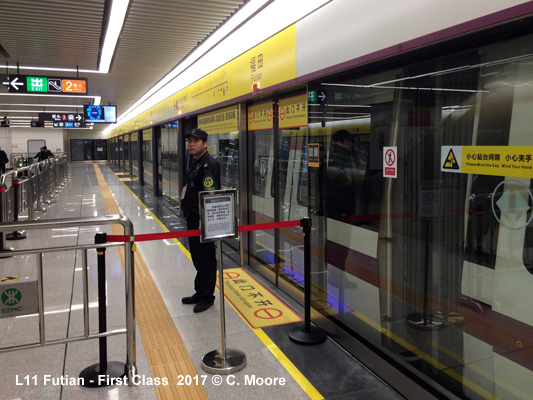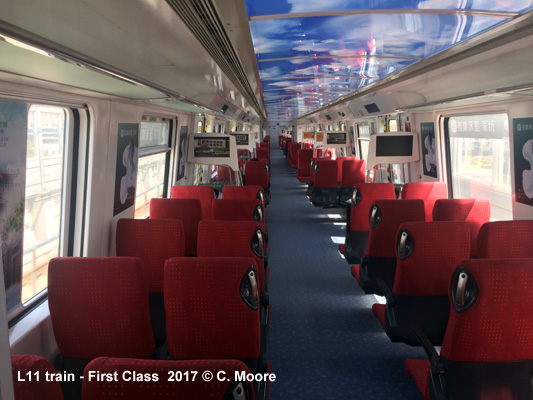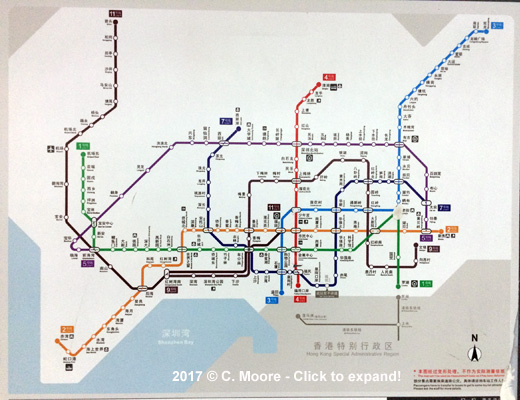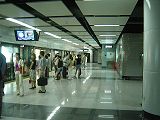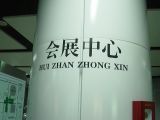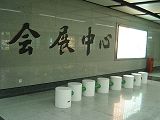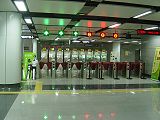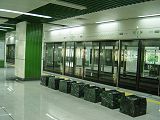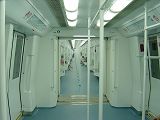Click on map to expand to full size!
| SHENZHEN |
|
In less
than 30 years, Shenzhen has grown from fishing villages with barely
310,000 residents into nowadays one of the biggest and most modern cities
in China. Sitting next to Hong Kong,
across the border of Sham Chun River, it is the home to 13 million inhabitants,
the busiest shipping ports and a major manufacturing and research centre.
With an exploding population and economy, Shenzhen is facing huge pressure
on transportation. Shenzhen became the 6th Chinese city with metro,
after Beijing, Hong Kong, Shanghai, Tianjin and Guangzhou. Opened in
2004, the Shenzhen metro is a modern system with platform screen doors
and a contactless smart card "TransCard". It also connects with the
Hong Kong metro system at Luohu and Futian Checkpoint , where passengers
can interchange to Hong Kong East Rail, after passing customs clearance.
|
| Line 1 - Luobao Line |
|
41 km - 30 stations 28-12-2004:
Luohu - Window of the World (Shijiezhichuang) |
|
|
| Line 2 & Line 8 - Shekou Line |
|
L2: 38.8 km - 32 stations + L8: 20.4 km - 11 stations > operated jointly without transfer at Liantang 28-12-2010:
Window of the World - Chiwan (14.5 km) |
|
|
| Line 3 - Longgang Line |
|
28-12-2010:
Caopu - Shuanglong (25 km) |
|
|
| Line 4 - Longhua Line |
|
30.4 km - 23 stations. Line 4 is operated by the Hong Kong MTR Corp., Ltd. 28-12-2004:
Fumin - Children's Palace (Shaoniangong) (2.8 km) |
|
|
| Line 5 - Huanzhong Line |
|
47.6 km - 34 stations 22-06-2011:
Qianhaiwan - Huangbeiling (40 km) |
|
|
| Line 6 - Guangming Line & Branch Line |
|
49.1 km (26.2 km elevated) - 27 stations 18 Aug
2020: Science Museum – Songgang (49.1 km) Line
6B - Branch Line: |
|
|
| Line 7 |
|
28-10-2016:
Xili Lake - Tai'an (30.3 km) |
|
|
| Line 8 |
|
See Line 2 |
|
|
| Line 9 |
|
36.1 km - 32 stations 28 Oct
2016: Hongshuwan South - Wenjin (25.3 km) |
|
|
| Line 10 - Bantian Line |
|
28.9 km (all underground) - 24 stations (+1 in 2021) 18 Aug
2020: Futian Checkpoint – Shuangyong Street (28.9
km) |
|
|
| Line 11 - Airport Line |
|
28 June
2016: Futian – Bitou (51.9 km) |
|
|
| Line 12 |
|
Tangential line through western districts: 28 Nov
2022: Zuopaotai East – Waterlands Resort East (40.5 km) |
|
|
| Line 13 |
|
45.8 km when finished 28 Dec 2024: Shenzhen Bay Checkpoint - Hi-Tech Central (6.4 km)
|
|
|
| Line 14 |
|
50.3 km express metro line, relief line for line 3 28 Oct 2022: Gangxia North – Shatian (50.3 km) |
|
|
| Line 16 |
|
Metro line through the eastern suburbs: 28 Dec 2022: Universiade – Tianxin (29.2 km) |
|
|
| Line 20 |
|
8.4 km - 5 stations 28 Dec 2021: Airport North – Convention & Exhibition City
|
|
|
| Metro Projects |
|
For more details see Wikipedia. See all planned lines here |
| TRAM |
|
Starting from the present northern end of metro line 4 at Qinghu, an 11.3 km tram system with three legs began trial runs on 30 June 2017 serving the Longhua New District. Regular passenger service started on 28 Oct 2017.
|
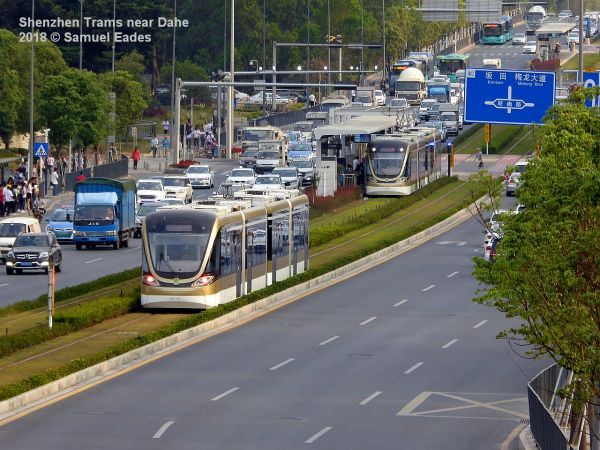
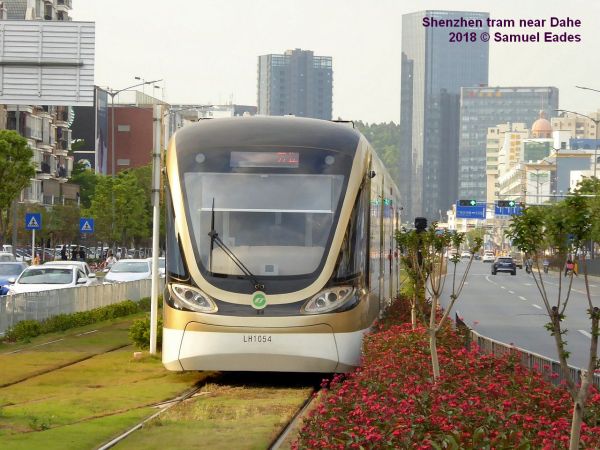
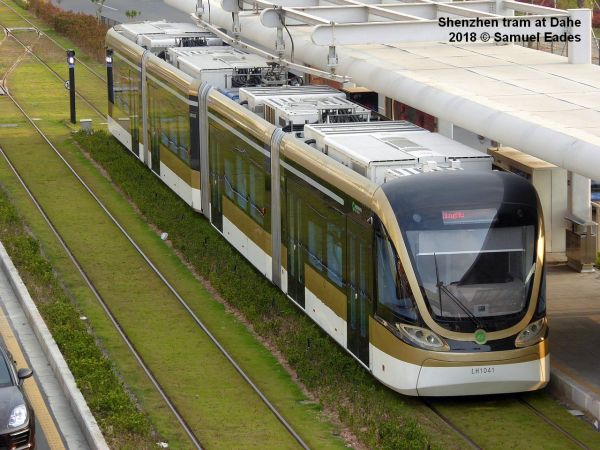
|
| PINGSHAN YUNBA - SKYSHUTTLE |
|
Elevated people mover line in the northeast of the city 28 Dec 2022: Pingshan HSR Station - BYD North (8 km) |
| Links |
|
Shenzhen Metro (Official Website) Shenzhen Metro at Wikipedia Map with future lines from Wikipedia Shenzhen Metro at startinchina.com |
| Photos |
| Report |
|
Craig Moore reports from Shenzhen in October 2015 (updated in April 2017): Shenzhen Shenzhen has played on both its status as Special Economic Zone (SEZ) within an ever opening and economically dynamic P.R. China, and its strategic location between two of the giant cities of the region, Guangzhou and Hong Kong. Using this to its advantage, Shenzhen has become a huge, modern and enterprising city itself with a population of over 10 million. The Shenzhen Metro has naturally piggybacked on this growth and in just 13 years (opened 2004) it has reached 281.1km of revenue track, of which 225.9km is underground. The system has 167 stations. This makes the Shenzhen Metro the world’s 9th longest Metro and 4th longest in China. Even more impressive is the fact that 93% of this network has been brought into service since 2011. This rapid expansion has brought with it elements of inconsistency which is not normally the case in the heavily regulated Chinese urban rail environment. And so the Shenzhen Metro has different line ownership and operation, different branding, power supply, and stock. Despite this, it maintains key elements of uniformity in terms of joint ticketing, free interchange between all lines and a single schematic map. The Shenzhen Metro is also quite unique in that it has interchange with the Hong Kong MTR, which involves transfer though immigration and customs etc. Shenzhen Metro Getting there: Whilst Shenzhen is easily accessible by frequent rail services from Guangzhou, the most interesting entrance to the city and its Metro is, in my opinion, from Hong Kong. The system connects with the MRT at Lok Ma Chau (Futian Checkpoint on the Shenzhen side) and Lo Wo (Luohu on the Shenzhen side). From central Hong Kong this involves a journey on the East Rail Line (the former Kowloon Canton Railway) from Hung Hom in central Kowloon. This line is almost entirely above ground and offers views of the mountainous areas of the New Territories, the older, smaller communities and new mega housing complexes in the north of the Hong Kong SAR. Services operate at 4 min headways along the main route with each alternate train branching at Sheung Shui - thus providing 7/8 services per hour to each of the border stations. The short journey on either of these branches from Sheung Shui does attract quite a heavy ticket supplement. Each leg costs $26.50 HKD (€2.85) for the 3min ride whist the 34km journey on the line between Sheung Sui and central Kowloon to costs just $10.50HKD (€1.32). Moreover, like the Airport Line, access to these two border stations is not possible on the MTR Day Ticket. Crossing: The Lo Wu crossing is the most populous and the traditional point of entry into Shenzhen from Hong Kong. The stations on both sides have one island and two side platforms with passengers alighting from their respective systems through the island platforms. Passengers joining the respective systems here are chaperoned to the side platforms. When trains arrive, the train is emptied before the doors on the side platforms are opened. Lo Wo/Luohu stations is rather slovenly and signage (on the Chinese side) is at best adequate for the task of negotiating immigration and customs. At Lok Ma Chau/Futian Checkpoint, the platform layout is that of simple dead end island platforms with clear signage to immigration processing. In contrast to Lo Wu, this facility is newer, huge, clean and modern, although the scrummage at Fuitan Checkpoint station brings a little chaos to a pretty smooth experience. Just to note that both Hong Kong stations are above ground, whilst both Shenzhen stations are underground. As most passengers are either Hong Kong residents or PRC citizens the queues for ‘visitors’ is quite short and very speedy. After the first immigration there is a ‘no mans land’ of duty free, bureau de change and tourist information. Also enclosed within the station-immigration structure are the bridges which cross the Sham Chun waterway, dividing Hong Kong and the P.R.C. Both bridges afford views of the Shenzhen skyline, although the Lo Wu crossing, being central, is the most dramatic. Adding to this, below the bridge lies the security fencing along the southern section of the river and the views in the middle distance show the remnants of the border security/watch towers from pre 1997 days when ideological differences between the two areas were more pronounced. After the bridges, the opposing immigration booths await followed by direct access to the relative Metro stations. Naturally there are quiet and busy times but the whole process is very swift and from alighting one system to joining a train on the other system is only 5-10mins. As far as station interchange goes, these must be some of the most interesting there are. The System: The system has 8 lines (Line 11 can be described as a Suburban Metro), with 1 and 4 being the original 2004 lines and the ones connecting to the border. Normally I experience Chinese Metros having arrived straight from Europe and so it was interesting to observe the immediate differences between the Hong Kong and Shenzhen metros as these highlight the idiosyncrasies of Chinese systems and, just how incredibly efficient, effective and smart is the Hong Kong MTR. The Shenzhen Metro stations are a little less stylish in general, although the difference is now minimal as Chinese station and stock design has caught (and in some cases surpassed) its neighbours. There is a marked increase in Metro personnel, barriers and security protocols. As an aside, Chinese metro systems love barriers, either joining or leaving escalators, in connector tunnels and around entrance halls and ticket barriers. This is a necessary evil on many systems to keep the huge volumes of passenger traffic flowing well. The volume doesn’t seem to be there in Shenzhen, but still the barriers are plentiful. These differences occur despite the Shenzhen Metro approach of adopting many of Hong Kong MRT characteristics, in stations, uniforms, and information provision. The stations have large entrance halls with banks of ticket machines all with touch screen maps for the purpose of ticket purchase. These machines dispense green RFID tokens for occasional users (RFID stored value cards are available for frequent users and the Hong Kong MTR Octopus Card can also be used in Shenzhen). Access to platforms are via escalator and stairs and platforms are smart, ordered and clean with large schematics (no geographic maps on this system), line information (the former naming of lines has now been fully replaced by numbers) and RTI information via television screens located above the full platform screens. Lighting on some the underground platforms is quite dim but brightens when trains are due (another HK influence). Interchange is easy, but signage could be improved a little - I feel it is not to the usual Chinese quality - and this is important as this system has been planned with interchange in mind. There are 28 interchange stations within the system (excluding the 2 border interchanges) and most lines provides connection to most other lines. Cross platform interchange is possible at a few stations, the one at Laojie (Lines 1/3) being very broad (about 80m between the two platforms), and Futian and Chegongmiao stations, home to several lines, are enormous structures. There is a mix of operations with SZMC operating the majority of lines (Line 3 is operated by Shenzhen Metro Line 3, and Line 4 is operated by MRT Shenzhen). Line 2, and the new Line 7 and 9 are fully underground, whilst the remaining five lines have elevated running in parts. These provide interesting views of the rapid urban development and, in the case of Line 11, some magnificent views of the coastal area up toward the airport. The elevated stations are all very similar with island platforms and half platform screens. They have large canopied roofs and are substantial structures, often located in the middle of multi-lane roads, thus access is often via long elevated walkways. The trains run very rapidly on these sections as the stations are often 1.5/2.0km apart. Services operate from 0630-2300 and have base headways of 4-7min, although there are 2-4min frequencies during peak periods. Services operate 6 carriage sets, but Line 11 uses 8 carriage sets with the rear two carriages as first class, with plush red airline type seating, and has 8min frequencies. Stock across the system is a mix of CNR (Changchung) and CSR (Nanging), with Line 11 having the new merged CRRC stock. This variance of stock types is partly due to mixed ownership. Power supply is by via overhead lines except Line 3 which is supplied by third rail power. In all cases train interiors are bright, with side seating and ample standing room. Each carriage has small schematics (pretty ineligible) and most have dynamic strip maps which have different levels of information as the train journeys between stations, including locational information and exit details for upcoming stops. It is all very impressive. Many of the strip maps show individual lines as almost complete circles, rather than a straight line. This allows for more information to be transmitted. Audio and electronic information is offered in Mandarin, Cantonese and English. The ride is smooth, quiet and speedy, and station dwell times are suitably. Moreover, the crowding only appears at a few central stations and for the most part it is possible to get a seat or have adequate standing space in the train. The system, with its rapid expansion and good line connectivity offers very good coverage of the entire urban area, with all the main rail stations being served as well as the impressive new airport in the north west. Given the fragmented ownership and stock, it is good to note that there is a semblance of a cohesive brand. There is free interchange between all lines and there is now a single schematic map, although I find rather ugly and anorexic looking, with mixed angles and only vague geographic reference. Hard copy information is now plentiful with line and station guides also available for the newer line. Information provision has come on in leaps and bounds and the system now has a day ticket – valid for 24 hours (although you are given three hours’ grace at the end to leave the system (so 27hours). This is the fifth system in China to now offer day tickets and it costs just 20 Yuan (€2.72)-the equivalent of 103km/€. Distance based fares are also available and these are inexpensive. In conclusion, this is a good system that is easy to use, efficient, inexpensive and has wide coverage – one can only marvel at its recent expansion. The fragmentation of ownership, stock etc does mean a little cohesiveness is lost but the casual user would not notice this and the effort to offer an overarching brand has been successful – the MTR influence has rubbed off across the entire network and in many ways Shenzhen Metro has overtaken its famous and impressive neighbour. A great system now. |
| Photos |
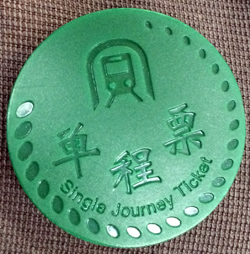
2004 © Robert Schwandl (UrbanRail.Net)
